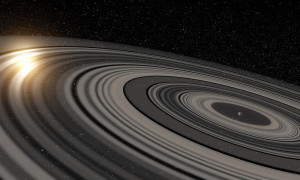The full story behind the ‘alien megastructures’ scientists may have found (but probably didn’t)
A story that went viral this week reported that astronomers finally found E.T., but those aren’t the real facts. CNET’s Eric Mack talks to the astronomers involved about what is still a very interesting star.
This is a tricky story to write. The mysterious scientific observations it deals with could wind up being nothing, or they could amount to some new, interesting astrophysical phenomenon that gets its own little section in a planetary science textbook someday. But there’s also the tiniest chance that some perplexing light curves from a distant star over 1,400 light-years from Earth could be the beginning of the biggest discovery since not just the birth of modern science, but the birth of well, the human race.
Yes, you guessed it, I’m talking about the possibility that we may have the first scientific evidence of intelligent life beyond our own solar system. The story’s been all over social media, TV and everywhere else this week since originally being reported by The Atlantic. You might have heard that astronomers think they’ve spotted giant solar collectors, Dyson spheres or other megastructures straight out of sci-fi built by an advanced alien civilization around a far-off star unremarkably named KIC 8462852.
The only problem is it probably isn’t any of those. But even if we haven’t spotted distant aliens, whatever it is we have spotted is undeniably odd at the very least.
Basically, the star’s light curve seems to show some strange stuff passing in front of the star, at irregular intervals and sometimes even appearing to shift shape or orientation along the way — this is very different from the relatively predictable orbits we see objects making around our own sun and most other stars that Kepler has observed.
As soon as I read the original Atlantic piece, I reached out to the Yale postdoctoral researcher who has studied KIC 8462852 for the past four years, and to two leading scientists with an interest in the search for extraterrestrial intelligence (SETI) who now hope to check for signs of life around the star beginning as soon as February. All three stressed to me over the phone this week that the source of the mysterious light curves observed by the Kepler Space Telescope from star KIC 8462852 probably isn’t aliens.
En: cnet.com

